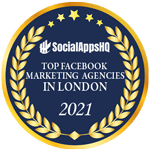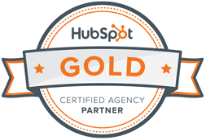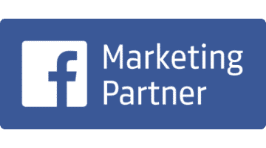How Much is SEO Worth for Your Business?
Businesses have been implementing SEO (Search Engine Optimisation) tools within digital marketing strategies for a while now – and, when they do it right, they rarely look back. Some organisations hire specialist agencies to bring their SEO knowledge, and help optimise digital marketing strategies. However you slice it, the SEO cake is not a new one – but that doesn’t mean it’s not got unbelievably valuable long-term benefits baked right into the mixture.

One of the primary benefits of SEO is that organic searches can become the most common source of your website traffic, which will ultimately lead to higher engagement and conversion rates, since you’re tapping into users’ search intent. Focusing on SEO efforts helps you to build your online presence, optimise your website, gain new backlinks through digital PR outreach and more.
Understanding the true value SEO brings to your business, and the correct SEO tactics to utilise, can help inject fuel into your marketing efforts and smash your KPIs. It’s like finding the Masterball in Pokemon. It’s incredibly powerful, in the right hands – and especially when you use it just right.
In this article, we’ll be covering:
- Is SEO worth investing in, and how do I get started?
- Understanding H1 heading tags
- The importance of ‘Call To Action’ in the hero of pages
- Case studies of success with The Brains
- Showcasing the CTR of sites in Google’s top ten search results
Is SEO worth investing in, and how do I get started?
A report conducted by HubSpot shows that 61% of marketers stated that ‘SEO and organic traffic generate more leads than any other marketing initiative’.
In contrast to Google ads, SEO is a long-term strategy built with the intention of improving your organic traffic, organic conversions and onpage experience in the eyes of search engines. Where paid ads have a structured dashboard that can help you track performance, SEO relies on monitoring key onsite metrics such as keyword growth, traffic growth and organic conversions. PPC will show a dashboard that records daily expenditure with sales revenue from ad and lead conversions, but SEO will rely on the other key organic metrics.
It can sometimes be a head-scratcher to understand what all the industry terminology means (check out our jargon buster for some help there), which metrics to track, and how to properly report on all these metrics to ensure maximum ROI. Then there are the tricks of the more technical SEO trade, like ensuring your business’ website load time is between 1-3 seconds.
A study by Website Builder Expert states that ‘bounce rates increase by 9% if your website takes longer than 2 seconds to load, and bounce back a further 38% if your site takes 5 seconds to load.’ Those are numbers to make you sit up and take note.
Knowing how to code and structure various aspects of your website is a very important SEO tactic. However, these aren’t skills the average CMO or managing director is taught,, and finding the time to learn about them can be… difficult.
So, one way to begin your SEO journey with ease is to think about investing in optimising your digital marketing strategy through hiring a tried-and-tested SEO agency. They’re perfectly positioned to handle all the industry, content and technological enquiries you may have.
Testament to the value SEO brings, Google’s Search Liaison John Mueller, says that he just does not see search engines becoming so advanced that SEO is not required for businesses. Think about that for a second – with all the rapid advancements and technological overhauls the internet undergoes – metaverse, we’re looking at you – one of Google’s top brass believes that it will never not be necessary for businesses to optimise their online showing. SEO is not only a primary marketing tool of today; it’s here to stay, for the long game.
A word on social media marketing (SMM), and optimising your output for the various social platforms.
The difference between paid and organic social media lies chiefly in the results you receive. While organic social is unpaid, it’s a good way of developing consumer relationships and brand awareness among those people who just happen to see your content.
Paid social, though, notches this up a level, by giving you access to a larger, more targeted audience, and stands you in a better stead to convert leads into sales.
H1 heading tags
Heading tags fall under the wing of technical SEO, but are actually quite easy to come to terms with. There are basically six different header tags, H1-H6, which each serve a different purpose for your customers, but are mainly there to help with accessibility and usability for Google, and for your audience.
H1 heading tags are page titles that tell Google’s search bots what the pages are about and so, as you can imagine, H1 tags are considered to be the most prominent of the headings for Google’s ranking factor. Because H1 tags are the most visible content on your pages, it is usually the first point of contact and chance to capture your potential customers.
In doing so, identifying and using the right keywords for your heading tags helps you rank higher in Google’s search engine results. A good H1 sets your stall out and states your business, letting everyone know what you’re all about. SEO experts Moz previously stated that H1 tags are actually their second-most important ranking factor.
Although headline tags are very important for potential customers, they are equally important for allowing Google’s spiders (or bots) to ‘crawl and index webpages’. Spiders, bots, crawling… doesn’t this all sound a bit scary? Actually, it’s one of the most crucial steps in the entire SEO process. It’s basically Google’s way of analysing your pages and splitting them into categories based on relevance. If you aren’t utilising your headlines correctly, and Google can’t recognise your page by your content, it won’t appear on your target audiences’ search results pages.
When planning your H1 headings, it’s important to ensure you integrate one H1 tag in all your webpages and that they are aligned with your HTML title tag; the text that displays in users search engine results. Using long-tail keywords in your H1 tags can be a further differentiator in helping Google determine your on-page content and ranking it higher in search engine results pages.
The difference between short-tail and long-tail keywords is that short-tail keywords are concise and usually limited to one to two words, e.g. ‘DC Comics,’ ‘Batman,’ ‘Suicide Squad.’ As you can imagine, short-tail keywords receive incredibly high search volumes, and so are tremendously competitive.
However, long-tail keywords can help you attract more valuable leads by using more precise and focussed keywords, e.g. ‘who owns DC Comics,’ ‘actors who played Batman,’ ‘is Joker in Suicide Squad.’ Using relevant H1 tags is crucial for a high-quality user experience and to get ahead with your search engine rankings.
Ready to Climb Mt. Google with Brainy SEO Assistance?
Begin your SEO journey the right way, and partner up with the Brainiest SEO practitioners in the known universe. Reach out today to chat about your current SEO, and how we can take things to a whole new level.
The importance of ‘Call to Action’ when investing in SEO
All quality websites have a hero section; this is the first thing users see when clicking onto your site. It’s usually heavily graphics-based, a chance for businesses to really strut their stuff, and probably the most prime real estate on the entire page. Visual CTAs (Calls to Action) help your website aesthetically and also give visitors a compelling insight into your website, branding and the key ad message you are trying to communicate.
‘Hero image banners’ are usually situated at the top of your website, or if you are using a phone, on the side or top of your screen – or they sometimes disappear as you scroll down the page. Any hero image banner worth its salt will typically include a CTA, which tells your site visitors in no uncertain terms what to do next, guiding them toward your desired action: ‘buy now,’ ‘browse shop,’ ‘contact us.’
Whatever your desired action is – whether you want people to sign up to your weekly newsletter, or direct customers to a sales landing page – using CTAs within your hero image banner guides your customers towards what you are offering, and can boost your click-through rate (CTR) as well as drive leads and sales.
Creating a captivating hero section with CTAs can be a little time-consuming, but it’s oh-so worth the investment as they can inspire potential customers to take a desired action. To enhance your content, ensure that you are using compelling images, videos and colours, and that you have a relevant headline as well as a leading CTA that saves potential customers the hassle of having to figure out how to purchase your products.
Case studies of success with The Brains
There is a lot to get through to successfully deploy SEO and ensure maximum ROI. However, that doesn’t mean it’s impossible. You can either complete courses to learn more about SEO – check out our Brainy SEO Knowledge Hub – or simply hire bonafide experts who can cover everything from schema coding and Google Ads to analytics and technical witchcraft.
The demand for digital marketing agencies has inevitably increased since the pandemic. Businesses have been able to see first-hand the effects of expert knowledge, varying from on-page and off-page SEO, to local and technical SEO. Digital marketing experts are also able to assist with strategically implementing the most effective link-building strategies to Google Ads and digital PR.
Choosing the right digital marketing agency will depend on your business goals and how well they’re equipped to help you achieve them. SEO experts can carry out website and performance audits, and provide you with recommendations on how to achieve a great ROI.
Their expertise doesn’t end there, though – the right digital agency should be able to create, manage and track campaigns and paid ads, whilst ensuring the production of content that drives traffic and visitor engagement. Furthermore, agencies just like us here at The Brains also work on implementing industry-specific campaigns while managing, tracking and reporting on performance using data from Google Analytics.
Our SEO experts can help you attract high-value leads while boosting your online presence. For example, GRAKN.AI (since rebranded as TypeDB), a next generation hyper-graph database startup and one of our clients, tasked us with getting their groundbreaking technology in front of software engineers as quickly as possible, ahead of an important funding drive.
So we got right to work, realigning their marketing approach along the lines of best practise and optimising their content to drive more traffic. After just 4 months of working with us, GRAKN.AI saw a 30% uptick in monthly downloads, a 110% increase in average site duration session times, and they carved out a place on the hallowed page 1 of Google’s SERPs – for over 50 of their core search terms.
Then there was our work with Alistage, a leading UK stage manufacturer, who wanted to bolster their nationwide reputation and leverage new digital channels to continue their success as a preferred supplier for top film premiers and music festivals such as Glastonbury.
Our SEO Brains identified significant ‘white space’ opportunities to rank, and we were able to quickly increase their organic traffic by a jaw-dropping 200%, and get them onto page 1 of Google for the massively competitive search term ‘stage hire UK.’
Similarly, Poppy’s Funerals managed to conquer page 1 of Google for the search term ‘funeral directors’, and saw a stunning 130% increase in organic traffic after just a year of working with us.
Showcasing the CTR of Google’s top ten search results
Essentially, we know already that higher-ranking pages drive the highest click-through rates (CTR); appearing in any of Google’s top ten, first-page positions is an incredibly valuable achievement for any business.
Suring-up your use of SEO techniques to rank highly on organic search results pages and increase your CTR will be incredibly important for increasing your leads and conversions. Owning pole positions in the SERPs is a sure fire way of generating free SEO traffic overtime, in comparison to spending budget on PPC to generate that same traffic. So, when trying to determine how much is SEO worth, it’s important to understand how much you might be spending with a PPC budget that you could essentially be getting for free with a well-optimised website.
The average CTR on Google’s search results varies depending on paid or organic searches. The average CTR for ads positioned first on the search results page is 2.1%, whereas the second, third and fourth ads all fall well below 2%.
When it comes to organic searches, the first result has an impressive average 39.6% CTR, while the second result has a 18.4% CTR, which drops to below 10% for the third.
Earlier in the year, a study published by First Page Sage found that the top 3 organic search results receive more than two-thirds (68.1%) of all clicks on the Google Search page, while the number one organic search result receives an average of 19x more clicks than the top paid search result.
However, another important way to increase CTRs on Google’s top ten results is by analysing individual Google SERP features. For example, Google’s Snippets (short text boxes at the top of the results page; they usually are a quick way to answer a searcher’s question or query) usually consist of two top results, with the first ad averaging a 43.7% CTR, while the second averages a 27.1% CTR.
Other forms of SERP features are Google’s ‘Knowledge Panel’ which usually appears on the top right hand side of the page and has an average 1.1% CTR. The ‘People Also Ask’ box usually appears under the second or third search results and has three to four of the top questions related to the original query. The pages linked to these tend to have a 3.3% CTR.
Another SERP feature is Google image results, which average a 1.4 – 4.9% CTR. Video results often have a slightly higher CTR, averaging 2.5 – 6.1%.
Final thoughts on the value of SEO
Businesses, ultimately, need SEO for growth, and this continues to be proven as we move further into the internet age. From carrying out competitor and keyword analysis, implementing organic and paid ads, optimising your keywords and the wide use of content creation, there is a lot to focus on. This shouldn’t deter you, though, as the benefits of SEO will help you see a vastly higher ROI than traditional marketing.
QUICK LINKS
Take a look at our Brainy Academy topics and discover something new about digital marketing! Whether you’re here to learn about SEO or eager for insight into top PPC techniques, we’ve got the resources to help you master your chosen specialism.

SEO
Learn SEO with Brainy Academy and start generating some high-quality organic traffic to your website.

PPC
Learn PPC with Brainy Academy and start generating leads & sales from Google Ads and paid search advertising.

Social Media Advertising
Learn social media advertising with Brainy Academy, and turn your social platforms into revenue-driving lead generation channels.








